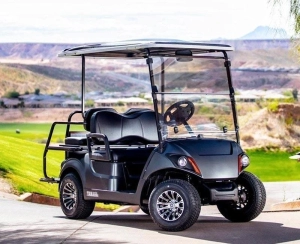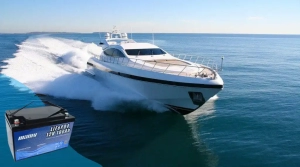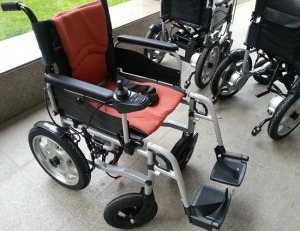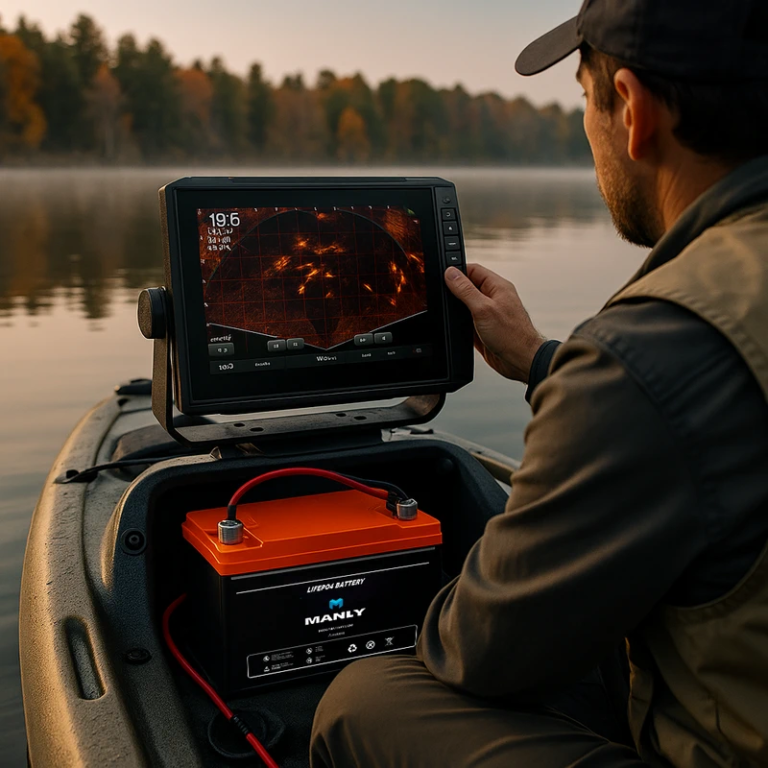Baterías para vehículos recreativos: todo lo que necesita saber
Tabla de contenido
- Baterías para vehículos recreativos: todo lo que necesita saber
- 1. La anatomía de una batería para vehículos recreativos
- 2. Diferentes tipos de baterías para vehículos recreativos
- 3. Cómo mantener las baterías de vehículos recreativos
- 4. ¿Se está descargando la batería de su vehículo recreativo?
- 5. How Long Do RV Batteries Last
- 6. Do More Batteries Solve RV Power Issues
- 7. Best RV Batteries to Elevate Your Travel Experience
- Batería de litio VARIL 12V 300Ah
- Batería de litio VARIL 12V 250Ah
- Batería VARIL 12V 200Ah LiFePO4
- Batería VARIL 12V 100Ah LiFePO4
- How Far Can a Golf Cart Range with 65Ah Lithium Battery Go?
- 2024 Marine Battery Guide: Types, Use, & Maintenance
- Benefits of Electric Wheelchairs
- A Comprehensive Guide to Flashlight Batteries: Types, Operation, and Choosing the Right One
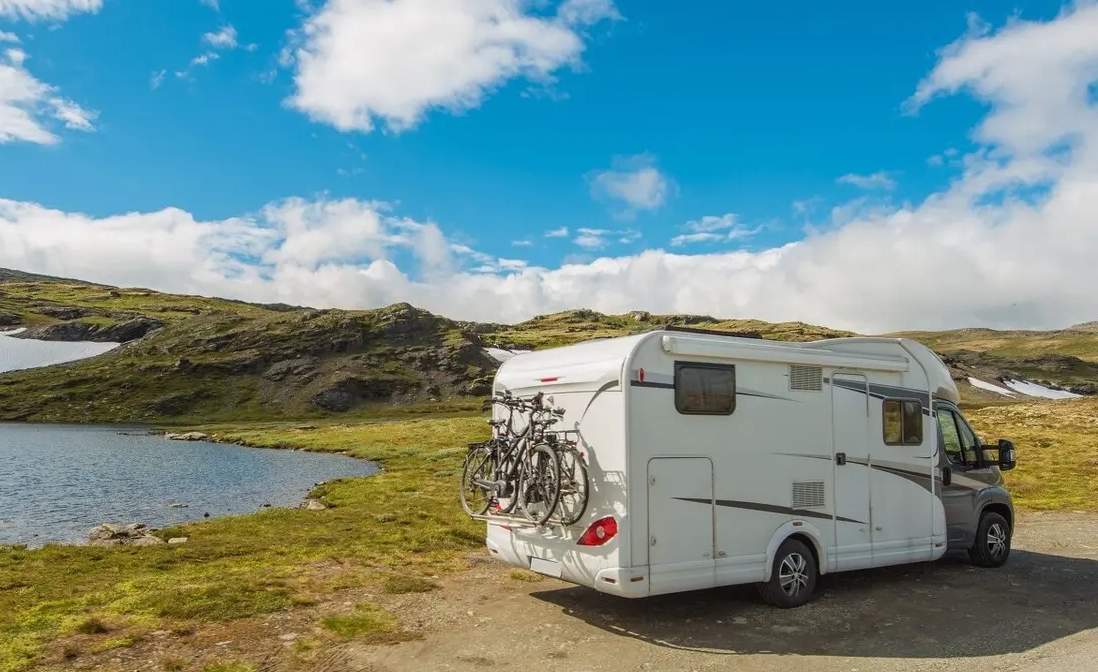
1. La anatomía de una batería para vehículos recreativos
So, what qualifies a battery to be tagged as an "RV battery"? In essence, an RV battery is the heart that pumps electrical life throughout your RV's veins. But don’t be mistaken, it’s not a one-size-fits-all deal. Most drivable RVs play host to two major types of batteries:Baterías de arranque (Baterías de chasis): Think of these as the ignition spark to your RV’s engine. But that's not all; once your RV roars to life, these batteries take on the role of powerhouses, lighting up the interiors and powering up other onboard electrical systems. Their counterparts from the world of regular automobiles might resemble them, but RV starting batteries are built tougher and are designed to release a sustained flow of power over extended durations.Baterías domésticas (baterías de ciclo profundo): Once you're parked and your RV becomes your temporary home, these are the batteries that keep the home fires burning. Everything from your microwave, refrigerator to the ambient lights - it all draws power from these. When not tethered to shore power, these batteries are the primary source of electricity. Their design enables them to be connected in parallel, thereby enhancing capacity.2. Diferentes tipos de baterías para vehículos recreativos
When it comes to house batteries, there are primarily three contenders in the market:2.1 Flooded Lead-Acid (FLA):
The old faithful of the battery world. Their widespread availability and cost-effectiveness make them an attractive choice for those working within a budget. The catch? They demand regular check-ups. From monitoring water levels to the potential hazards of acid spills or leaks, there's a bit of maintenance involved. They're also not the most efficient of the bunch, especially when juxtaposed against AGM or lithium batteries.2.2 Absorbed Glass Mat (AGM):
A close relative of the FLA, given both are variants of lead-acid batteries. But AGMs come with a significant upgrade. These are sealed units, eliminating the need for routine maintenance. Additionally, they possess a heightened resilience against factors like vibration, excessive heat, and overcharging. Their energy density is also commendable, allowing them to store a more significant amount of energy in a confined space. Yes, they are pricier than FLAs, but they compensate for this with a more extended service life.2.3 Lithium RV battery:
RV lovers are going wild for lithium RV batteries. Why? Well, if you’re camping off the grid and have solar panels on your RV, lithium batteries are your best bet for storing all that sunshine power.Why Lithium is the Way to Go:- Discharge Rate: Compared to the old-school lead-acid batteries, lithium ones hold their charge longer. They can use up to 80% of their stored energy. The old ones? Only about half.
- Charge Speed: Lithium batteries charge fast. They can handle a lot of power going in and out without getting hurt. Lead-acid batteries can't handle that kind of action. Charging them too fast can even be risky.
- Lightweight: These lithium batteries are light. Like, really light. Think about a third of the weight of an equal-sized lead-acid battery. So, if you’re trying to watch your RV's weight, lithium’s the way to go.
- Lifespan: These batteries just last longer. A lead-acid battery might last around 400 charge cycles. A lithium one? Over 2,000. That's a lot of trips without needing a new battery.
- Low Maintenance: No more checking on your battery all the time. No rust, no leaks. Just charge and go.
- Safety: You can put lithium RV batteries anywhere in your RV. Under your bed, in a cabinet, you name it. They don't let off dangerous fumes like lead-acid batteries. So, you're safe and sound.
- Space Savers: Not only are they lighter, but lithium batteries are also smaller. That means more space in your RV for other stuff.
- Steady Power: When lithium batteries give power, it's steady and consistent. Lead-acid ones? Not so much. So, with lithium, everything runs smoother.
2.4 LiFePO4 battery:
The lithium iron phosphate battery (Batería LiFePO4) o batería LFP (ferrofosfato de litio) es un tipo de batería de iones de litio que utiliza fosfato de hierro y litio (LiFePO4) como material del cátodo y un electrodo de carbono grafítico con un respaldo metálico como ánodo. Debido a su menor costo, alta seguridad, baja toxicidad, ciclo de vida prolongado y otros factores, las baterías LFP están encontrando una serie de funciones en el uso de vehículos, aplicaciones estacionarias a escala de servicios públicos y energía de respaldo. Las baterías LFP no contienen cobalto.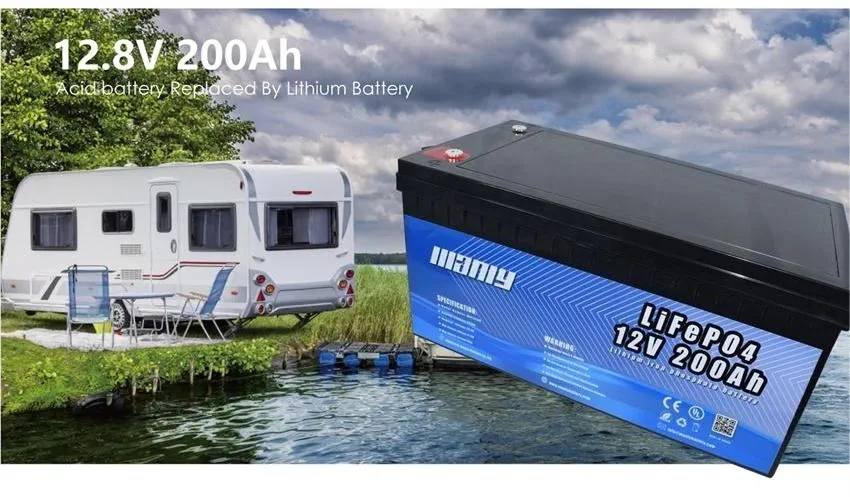
3. Cómo mantener las baterías de vehículos recreativos
Maintaining your RV batteries is akin to taking care of your heart - with diligent attention and routine checks, it ensures a smoother journey through the landscapes of your adventures. Here's a deep dive into the world of RV battery maintenance, covering the gamut from general care to the specifics for each battery type.3.1 Mantenimiento general
Battery maintenance is a combination of vigilance and periodic intervention. It’s not rocket science, but a matter of regular checks and timely interventions.Baterías inundadas de plomo-ácido (FLA):Of the triumvirate (FLA, AGM, and LiFePO4, FLA)batteries demand the most maintenance. It's essential to inspect the electrolyte level periodically and top it up with distilled water when needed. Also, ensure that the terminals remain pristine and free of corrosion. Using a mixture of baking soda and water can be an effective cleaning solution for corroded terminals.Baterías con estera de vidrio absorbido (AGM):Although they are maintenance-free, periodic visual inspections will not hurt. Keeping the terminals clean and free of any corrosion is essential, ensuring uninterrupted power flow.Baterías de litio:Fully charging your lithium RV batteries will extend their lifespan.If you're not using your lithium RV batteries for more than three months, they should be fully charged. Keep them topped up and avoid letting them sit for over three months. Ideally, every three months, drain at least 50% of the battery. If possible, use even more and then recharge it fully.During summer, don't let your batteries sit under direct sunlight for extended periods. Constant high temperatures can cause chemical changes in the battery.Make sure metal objects don't get inside the battery storage area. They can cause the batteries to leak, overheat, produce smoke, catch fire, or even explode. Keep the battery compartment clean and free from metal debris.When using lithium RV batteries, take care. Overcharging, constant deep discharges, or bad charging habits can shorten their life. So, when using appliances in your RV, avoid fully draining your lithium RV batteries.3.2 Prácticas adecuadas de carga y descarga
Your RV battery's performance is closely tied to how you charge and discharge it.Información sobre carga- Utilice siempre un cargador de batería que sea compatible con su tipo de batería específico (FLA, AGM, LiFePO4).
- Respete los niveles de voltaje recomendados especificados por el fabricante.
- Overcharging is a battery’s nemesis. It accelerates wear and tear, thereby shortening the battery's lifespan.
- Un cargador de 3 etapas es beneficioso ya que carga la batería en las etapas de carga masiva, absorción y flotación, lo que garantiza una carga óptima.
- Nunca agote una batería por completo. Idealmente, las baterías de plomo-ácido nunca deberían bajar del 50% de carga, mientras que las baterías de litio pueden estirarse hasta un 95% de descarga.
- Un monitor de batería de calidad puede ser tu mejor amigo. Realiza un seguimiento del estado de carga y garantiza que nunca cruce el umbral inferior.
- Batteries don't appreciate being left discharged for prolonged periods; it adversely affects their health.
3.3 Cuidando su flota de vehículos recreativos
If you are a fleet owner, your responsibilities multiply. Here's how you can provide your customers with a seamless experience:Mantenimiento de rutina:Don't wait for a problem to surface. Schedule routine maintenance checks for all your RV batteries to ensure they're in tip-top shape.Almacenamiento adecuado: If your RVs aren't in active use, make sure the batteries are stored correctly, preferably in a cool, dry place.Protocolo de reemplazo: Batteries have a finite life. Having a replacement protocol ensures you're never caught off-guard.Educación del cliente:El conocimiento es poder. Eduque a sus clientes sobre los matices del uso, la carga y el cuidado general de la batería.4. ¿Se está descargando la batería de su vehículo recreativo?
Unfortunately, batteries aren’t immortal. Recognizing the warning signs can save you a lot of grief. Here's what you need to be wary of:Para baterías de plomo-ácido- Una batería que pierde su carga rápidamente o exige recargas frecuentes.
- Cualquier anomalía física como hinchazón o fuga.
- Dimming lights in the RV or an engine that's reluctant to start.
5. How Long Do RV Batteries Last
5.1 Lithium RV Batteries: How to Calculate Your Power Needs
RVs have a bunch of things that use power. The main consumer of electricity on the RV is microwave, and AC. Then you have smaller stuff like rice cookers, electric frying pans, kettles, and computers.Breaking it down:- The fridge uses about 40 watts. Daily = around 0.5 kWh.
- Microwaves are power-hungry. They use between 700-800 watts. But if you're just warming up food for 10 minutes a day, you're looking at about 0.2 kWh.
- Rice cooker = 600 watts. Making one pot of rice eats up about 0.3 kWh.
- Electric frying pan = At least 800 watts. Frying up a dish for 10 minutes uses about 0.15 kWh.
- Need hot water = An electric kettle uses about 800 watts. Heating up 2 liters= about 0.24 kWh.
- Desktops use about 150 watts, while laptops are around 60 watts. If you're working for 3 hours a day, that's another 0.3 kWh.
- RV lights use about 50 watts in total. If they're on for 2 hours, that's 0.1 kWh. Adding everything up, your RV uses around 1.8 kWh daily.
5.2 Tips for Longer-Lasting Lithium RV Batteries
- If you're not using your RV's lithium battery for a while, make sure you turn off everything. Check that there's no drain from the battery. Even small devices can drain the battery if left on. Sure, these lithium RV batteries have built-in protection against getting drained too much. But letting them sit empty for a long time? That's a quick way to shorten their life.
- Save on power! Energy in an RV is like gold. Watch out for those little devices that leak power. And try to avoid stuff that uses a lot of power even when they're just on standby. For instance, some inverters can use up to 100W just sitting there. That's a whopping 200Ah in just one day!
5.3 Optimizing Battery Usage During Off-Grid RV Adventures
Modern Class A motorhomes often come equipped with household-like amenities. For the comfortable functioning of the AC, fridge, electronic water heater, and entertainment systems, a substantial battery reserve is essential. Typically, such RVs incorporate multiple batteries dedicated to indoor comforts.On the other hand, travel trailers might function effectively with just one battery to illuminate the interiors and keep the refrigerator operational. When you're adventuring without access to electrical connections, it becomes imperative to manage your battery judiciously. Below are some strategies for ensuring prolonged battery life during off-grid or boondocking experiences:● For RVs operating on a single battery, periodically crank up the engine while off-grid. This acts as a natural battery rejuvenator, similar to traditional vehicles.● Integrate extra batteries to cater to indoor comforts. The energy consumption of keeping the lights illuminated can be surprisingly high. Think about adding a backup battery dedicated to essential functions.● Ponder over incorporating solar panels for battery replenishment. With a solar arrangement and an unobstructed solar pathway, you can virtually ensure endless power.● Embrace the versatility of propane. Leveraging propane for activities like heating, cooking, and even refrigeration can significantly reduce your electricity concerns during off-grid excursions. Propane is widely accessible in campgrounds and numerous fuel stations. Moreover, its long shelf life and portability make it a go-to choice for both indoor and outdoor energy needs.By adhering to these guidelines and executing regular battery upkeep, you can guarantee prolonged battery life and uninterrupted RV adventures.6. Do More Batteries Solve RV Power Issues
The 50% Rule for RV Batteries
What is the 50% rule for RV batteries? Battery capacity is measured in Ampere-hours (Ah). Theoretically, a 100Ah battery should deliver 1A of current for 100 hours or supply power for one hour at 100A.But theory and practice often differ. What's clear is that out of a 100Ah battery, only around 50Ah is efficiently usable. This is because the actual capacity of a battery varies based on the current it's supplying - higher currents result in reduced capacity.This is evident when comparing AGM batteries, which utilize ultra-fine fiberglass material and have venting valves on the cover, with conventional batteries. The latter is not sealed and requires frequent water replenishment. Although they might be pricier, AGM batteries have triple the charging capacity of lead-calcium batteries, offering a longer lifespan.It's advised not to drain your battery below 50%. If it drops below this, the voltage could fall under 12V, rendering it incapable of powering 12V appliances in the RV. Draining it below 20% could significantly reduce its lifespan.Experienced RV users always caution against dropping the charge below 50%. The lowest charge level shouldn't be below 20%. Additionally, after a full charge, the voltage might be slightly higher than the usual 12V. This is normal, especially if your RV is equipped with inverters or solar panels, which can be monitored with battery monitors.Is Adding More Batteries the Solution to Insufficient Power?
RV users often face power shortages. Many modify their battery systems after purchase, adding 2-4 extra batteries, boosting capacity from 100Ah to 200Ah or even 400Ah.However, even with a 400Ah system, only about half (around 200Ah) is usable. Why?The principle from physics involving interconnected containers can explain this. If water flows at a constant rate, the volume of water in each container decreases as you move away from the outlet. If the container closest to the outlet has less than 20% water, the system is considered non-functional.When we relate this to RV lithium batteries, it's evident that even if we increase battery capacity, we can't fully utilize it.Battery Connection Types
If you aim to maintain the same current but increase voltage, you can connect two 6V batteries in series to produce a total voltage of 12V while the current remains constant. This is done by connecting the negative terminal of one battery to the positive terminal of the other.Parallel battery connections increase the current while maintaining the same voltage. Connecting two 6V batteries in parallel keeps the voltage at 6V, but the current increases. This is achieved by connecting both positive terminals together and both negative terminals together.Some battery systems employ both series and parallel configurations combined into a single battery group system.7. Best RV Batteries to Elevate Your Travel Experience
Selecting the right battery for your RV is pivotal for ensuring an uninterrupted and smooth journey. With the myriad of options available, we’ve narrowed down three top-tier batteries from MANLY Battery that stand out for their impeccable quality, longevity, and performance.About MANLY BatteryBatería varonil stands as a paragon in China's battery manufacturing sector. With over 13 years of expertise, we specialize in producing high-quality lithium RV batteries. Every day, we produce an impressive 6MWh capacity of the battery cells and packs, including baterías de litio de 12 voltiosy baterías lifepo4 de 12v100ah. Estos están meticulosamente elaborados en nuestras amplias instalaciones de 65.000 metros cuadrados. Ubicados estratégicamente en Shenzhen, Dongguan y Huizhou, garantizamos que nuestrosBaterías para vehículos recreativos de 12 voltiosdestacan en el mercado con una garantía de 10 años que los respalda. Nuestra oferta abarca desde baterías LiFePO4/iones de litio de 6 V a 72 V, adecuadas para diversas aplicaciones, incluido el almacenamiento solar y la robótica.Batería de litio VARIL 12V 300Ah
Rising as a favorite amongst RV enthusiasts, this bateria de litio 12 voltios 300Ah uses the tried and tested LiFePO4 technology. It lasts over 5,000 cycles. Plus, it's safe! It has short circuit protection. There's also overcharge and over-discharge safety. This product comes with a balanced circuit. And the best part? You can connect multiple series in parallel.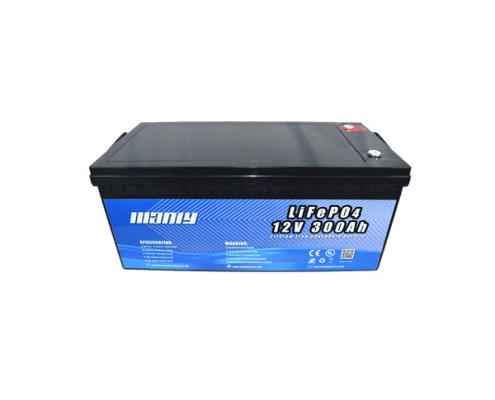
- Número de modeloR: MLP12300A
- Capacidad nominal: 300Ah
- Voltaje nominal:12,8 V
- Voltaje de carga MÁXIMO: 14,6V
- Corriente de carga MÁXIMA:100A
- Garantía: 10 años, con servicio oportuno las 24 horas
- Conexión:Soporta 4 en serie y 4 en paralelo
- Personalización:Amplia gama, desde el voltaje hasta la apariencia
- Funcionamiento sin mantenimiento;
- La larga vida útil de 10 a 15 años;
- Protección de seguridad múltiple BMS incorporada;
- Baterías de fosfato de hierro y litio de alta calidad, seguras y confiables;
- Más tiempo de recarga, mayor vida útil, protección económica y ambiental.
- Función Bluetooth (opcional)
Batería de litio VARIL 12V 250Ah
Positioned as the ideal replacement for lead-acid batteries, this bateria de litio 12v 250Ahpromete un rendimiento por excelencia. Construido con la misma tecnología confiable LiFePO4, su diseño impermeable, combinado con una garantía integral de 10 años, garantiza tranquilidad.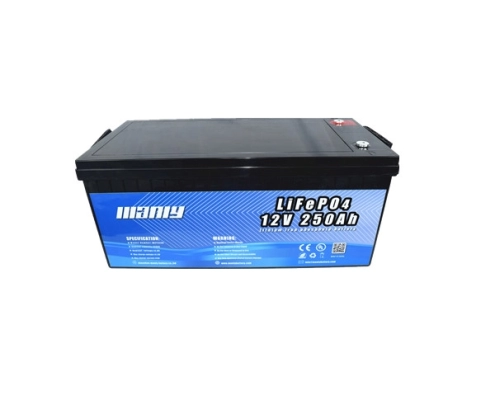
- Número de modelo:MLP12250A
- Capacidad nominal: 250Ah
- Voltaje nominal: 12,8V
- Voltaje de carga MÁXIMO: 14,6V
- Corriente de carga MÁXIMA:250A (Personalizable)
- Garantía:10 años, con servicio oportuno las 24 horas
- Conexión:Soporta 4 en serie y 4 en paralelo
- Personalización:Desde el tamaño y la capacidad hasta la apariencia
- Funcionamiento sin mantenimiento;
- La larga vida útil de 10 a 15 años;
- Protección de seguridad múltiple BMS incorporada;
- Baterías de fosfato de hierro y litio de alta calidad, seguras y confiables;
- Más tiempo de recarga, mayor vida útil, protección económica y ambiental.
- Función Bluetooth (opcional)
Batería VARIL 12V 200Ah LiFePO4
Batería VARÓN 12V 200Ah LiFePO4 is great. It's the perfect choice to replace old lead-acid batteries. It works really well. It has features like protection from too much voltage and current. Even if it gets hit hard, it won't explode or catch fire.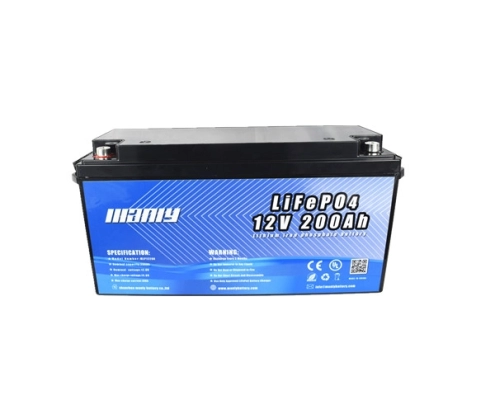
- Número de modelo:MLP12250A
- Capacidad nominal: 250Ah
- Voltaje nominal: 12,8V
- Voltaje de carga MÁXIMO: 14,6V
- Corriente de carga MÁXIMA:250A (Personalizable)
- Garantía:10 años, con servicio oportuno las 24 horas
- Conexión:Soporta 4 en serie y 4 en paralelo
- Personalización:Desde el tamaño y la capacidad hasta la apariencia
- Funcionamiento sin mantenimiento;
- La larga vida útil de 10 a 15 años;
- Protección de seguridad múltiple BMS incorporada;
- Baterías de fosfato de hierro y litio de alta calidad, seguras y confiables;
- Más tiempo de recarga, mayor vida útil, protección económica y ambiental.
- Función Bluetooth (opcional)
Batería VARIL 12V 100Ah LiFePO4
Baterías LiFePO4 de 12V y 100AhActualmente se encuentran entre los más populares para sistemas de energía solar fuera de la red. Son un reemplazo directo para las baterías de plomo-ácido de 12 V y una excelente actualización.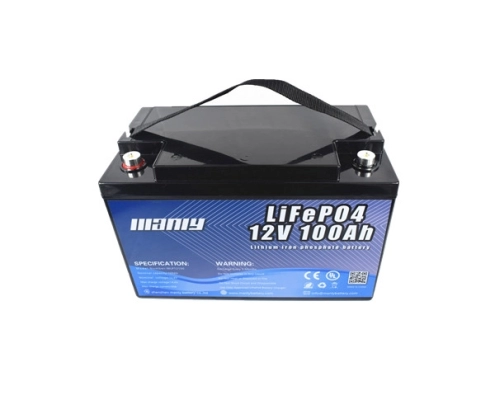 Parámetros de carga de la batería LiFePO412 V
Parámetros de carga de la batería LiFePO412 V- Tensión de carga:14,2-14,6 V
- voltaje de flotación: 13.6V (o deshabilitado)
- Tensión máxima: 14,6V
- Tensión mínima: 10V
- Voltaje nominal: 12V o 12,8V
- Funcionamiento sin mantenimiento;
- La larga vida útil de 10 a 15 años;
- Protección de seguridad múltiple LiFePO4 BMS incorporada;
- Celda lifepo4 de 100ah de alta calidad, segura y confiable;
- Más tiempo de recarga, mayor vida útil, protección económica y ambiental.
- Función Bluetooth (opcional)

